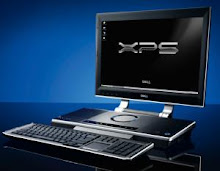The Unix operating system was conceived and implemented in the 1960s and first released in 1970. Its wide availability and portability meant that it was widely adopted, copied and modified by academic institutions and businesses, with its design being influential on authors of other systems.
MINIX
In 1991 while attending the University of Helsinki, Torvalds began to work on a non-commercial replacement for MINIX,[13] which would eventually become the Linux kernel.
Linux was dependent on the MINIX user space at first. With code from the GNU system freely available, it was advantageous if this could be used with the fledgling OS. Code licensed under the GNU GPL can be used in other projects, so long as they also are released under the same or a compatible license. In order to make the Linux kernel compatible with the components from the GNU Project, Torvalds initiated a switch from his original license (which prohibited commercial redistribution) to the GNU GPL.[14] Developers worked to integrate GNU components with Linux to make a fully functional and free operating system.
Commercial and popular uptake
Today Linux distributions are used in numerous domains, from embedded systems to supercomputers,[15][16] and have secured a place in server installations with the popular LAMP application stack.[17] Use of Linux distributions in home and enterprise desktops has been expanding.[18][19][20][21][22][23][24] They have also gained popularity with various local and national governments. The federal government of Brazil is well known for its support for Linux.[25][26] News of the Russian military creating their own Linux distribution has also surfaced.[27] India has gone so far as to make it mandatory for all state high schools to run Linux on their computers.[28] China uses Linux exclusively as the operating system for its Loongson processor family to achieve technology independence. [29] France and Germany have also taken steps towards the adoption of Linux.[30]
Current development
Torvalds continues to direct the development of the kernel. Stallman heads the Free Software Foundation, which in turn supports the GNU components. Finally, individuals and corporations develop third-party non-GNU components. These third-party components comprise a vast body of work and may include both kernel modules and user applications and libraries. Linux vendors and communities combine and distribute the kernel, GNU components, and non-GNU components, with additional package management software in the form of Linux distributions.
Design
A Linux-based system is a modular Unix-like operating system. It derives much of its basic design from principles established in Unix during the 1970s and 1980s. Such a system uses a monolithic kernel, the Linux kernel, which handles process control, networking, and peripheral and file system access. Device drivers are integrated directly with the kernel.
Separate projects that interface with the kernel provide much of the system's higher-level functionality. The GNU userland is an important part of most Linux-based systems, providing the most common implementation of the C library, a popular shell, and many of the common Unix tools which carry out many basic operating system tasks. The graphical user interface (or GUI) used by most Linux systems is based on the X Window System.
User interface
Users can control a Linux-based system through a command line interface (or CLI), a graphical user interface (or GUI), or through controls attached to the associated hardware (this is common for embedded systems). For desktop systems, the default mode is usually graphical user interface (or GUI).
On desktop machines, KDE, GNOME and Xfce are the most popular user interfaces,[32] though a variety of additional user interfaces exist. Most popular user interfaces run on top of the X Window System (or X), which provides network transparency, enabling a graphical application running on one machine to be displayed and controlled from another.
Other GUIs include X window managers such as FVWM, Enlightenment and Window Maker. The window manager provides a means to control the placement and appearance of individual application windows, and interacts with the X window system.
A Linux system typically provides a CLI of some sort through a shell, which is the traditional way of interacting with a Unix system. A Linux distribution specialized for servers may use the CLI as its only interface. A “headless system” run without even a monitor can be controlled by the command line via a remote-control protocol such as SSH or telnet.
Most low-level Linux components, including the GNU Userland, use the CLI exclusively. The CLI is particularly suited for automation of repetitive or delayed tasks, and provides very simple inter-process communication. A graphical terminal emulator program is often used to access the CLI from a Linux desktop.

No comments:
Post a Comment